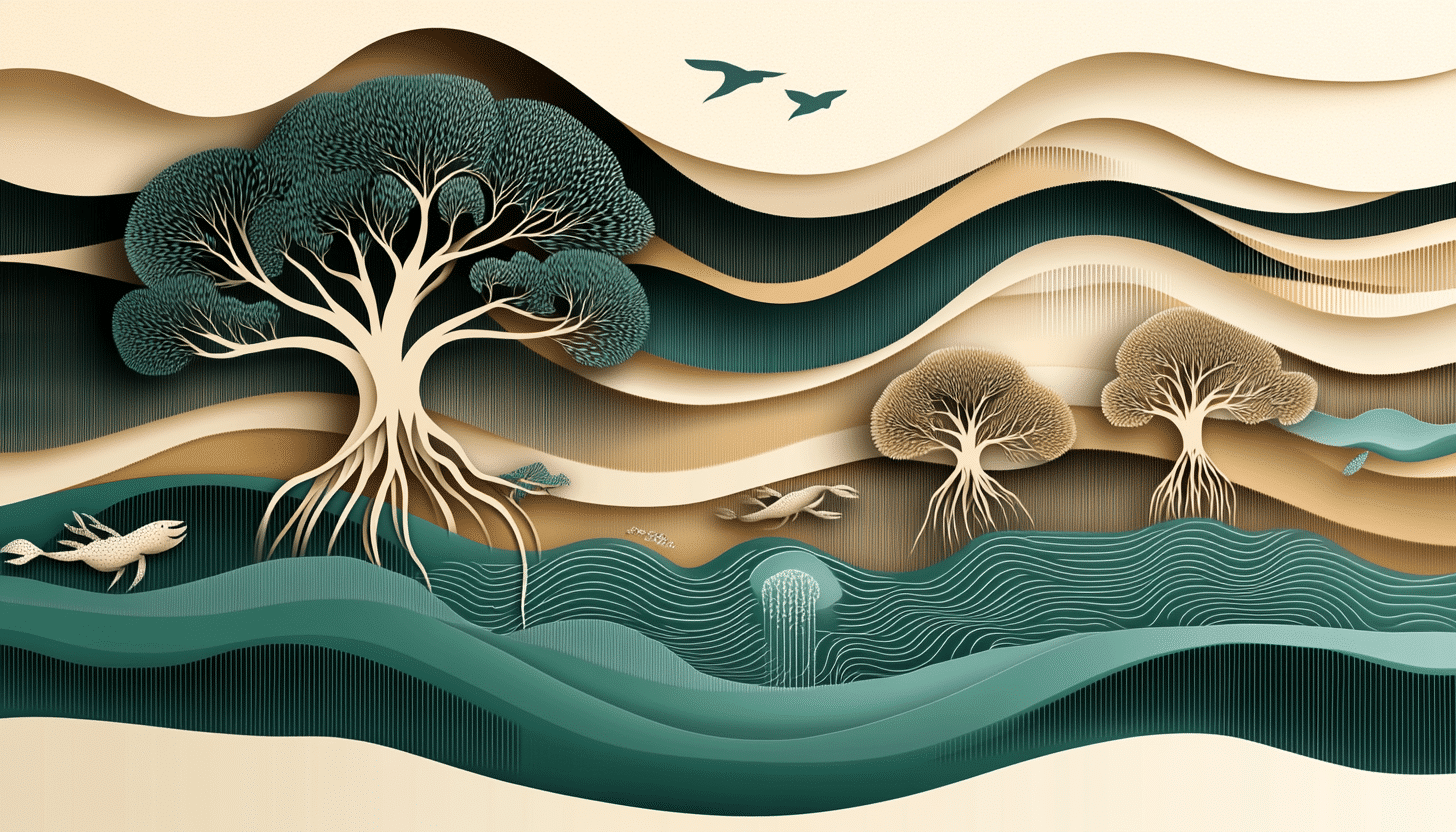What is the Day for the Conservation of the Mangrove Ecosystem?
The Day for the Conservation of the Mangrove Ecosystem (International Day for the Conservation of the Mangrove Ecosystem) is held every year on July 26 and is observed worldwide. Mangroves are a special group of trees and shrubs that grow in tropical and subtropical coastal zones, where freshwater and seawater meet. They are known for their complex root systems that rise above the water and anchor firmly into muddy soil. These roots help stabilize shorelines, reduce erosion, and protect against storm surges. Mangroves also serve as vital nurseries for fish, crabs, and birds, offering shelter during the early stages of life. In addition, they capture large amounts of carbon, making them powerful allies in the fight against climate change. The day encourages protection, restoration, and long-term management of these fragile ecosystems.
Many regions hold local cleanups, workshops, and replanting events during this day. Governments and environmental organizations use it to release reports and launch new projects. In coastal communities, the day is also a chance to share traditional knowledge about living with mangroves. Scientists, students, and conservationists join together to raise attention and promote solutions. The goal is simple: protect what protects us.
History and Origin
The day was established by UNESCO in 2015 to recognize the importance of mangrove forests and respond to the threats they face. Mangroves are disappearing faster than any other type of forest due to pollution, tourism, shrimp farming, and coastal development. Their loss affects not only wildlife but also millions of people who rely on them for food, shelter, and livelihoods. The date July 26 was chosen in memory of Hayhow Daniel Nanoto, a passionate environmental activist from Micronesia who died while working to save mangroves.
The idea for a global day emerged from ongoing international concern about climate change and habitat loss. Unlike rainforests or coral reefs, mangroves received little public attention until recent years. Scientists and coastal communities had long understood their value, but global campaigns were needed to bring wider awareness. UNESCO’s decision helped spark coordinated efforts across regions and sectors.
Since then, the day has gained visibility and influence. More countries have adopted mangrove protection laws, and restoration efforts have grown. It is now common for international organizations to release studies or reports on this date. Local groups often hold planting drives or educational events. The day continues to grow as both a symbolic moment and a practical push for action.
Who Participates in the Day for the Conservation of the Mangrove Ecosystem?
- Coastal communities: People living near mangrove areas take part in planting, cleanup, and preservation activities.
- Environmental NGOs: Organizations work on awareness campaigns and long-term protection plans.
- Educators and students: Schools and universities use the day to teach about marine ecosystems and environmental science.
- Scientists and researchers: Experts share findings, publish new studies, and promote better policy.
- Government agencies: Ministries of environment or coastal development support projects and highlight national efforts.
Slogans and Themes
Themes often focus on protection, regeneration, and the connection between people and ecosystems. Slogans like “Restore Mangroves, Restore Balance,” or “Protect the Roots of Life” reflect the deep impact of these forests. Campaigns tend to highlight the urgency of preserving mangroves in the face of rising sea levels and changing coastlines. Educational programs also underline their value in biodiversity and climate resilience. The messaging aims to be clear, direct, and grounded in both science and community needs.
Colors, Symbols and Patterns
Colors:
- Emerald green: Represents the dense leaves and health of mangrove forests.
- Earth brown: Symbolizes the rich mud and roots that anchor these trees.
- Sea blue: Reflects the coastal setting where mangroves grow and thrive.
Symbols:
- Mangrove tree: The central image of the day, representing strength, resilience, and life at the edge.
- Tangled roots: Used in visuals to show the unique structure that supports both land and water life.
- Fish or crab: Common symbols of the wildlife that depend on mangrove ecosystems.
Patterns:
- Wave patterns: Reflect the water movement that surrounds and shapes mangrove forests.
- Root-like lines: Designs inspired by mangrove roots, showing connection and support.
- Leaf clusters: Used in prints and visuals to evoke forest density and biodiversity.
Most Used Hashtags
- #MangroveDay
- #MangroveConservation
- #ProtectMangroves
- #CoastalEcosystems
- #BlueCarbon
How to Celebrate the Day for the Conservation of the Mangrove Ecosystem
- Join a local planting event: Many groups organize replanting activities near coastal areas or riverbanks.
- Learn and share facts: Use educational materials to teach others about the importance of mangroves.
- Support local conservation: Donate to or partner with groups protecting mangrove regions in your country or abroad.
- Visit a mangrove reserve: Explore one in your region and learn directly from guides or local experts.
- Raise your voice online: Use hashtags, photos, or short videos to spread the message and show support.
Why Is the Day for the Conservation of the Mangrove Ecosystem Important?
This day is important because mangroves are vital and vulnerable at the same time. They protect coasts from erosion and storms, store large amounts of carbon, and provide habitat for countless species. Yet they are being destroyed faster than they can recover. The day pushes governments, communities, and individuals to act before these forests are lost. It is a chance to move from awareness to action.
It also helps shift the way people view nature. Mangroves are not empty swamps or wasted land. They are rich, essential systems that connect land, sea, and people. By recognizing their value and restoring their space, we also protect our future. The Day for the Conservation of the Mangrove Ecosystem reminds us that sometimes the most powerful defenses are the ones already growing at our feet.
Features
July 26: Day for the Conservation of the Mangrove Ecosystem
Why do you keep falling for the same type?
Read the article Lovemaps: the hidden blueprint of our love.

